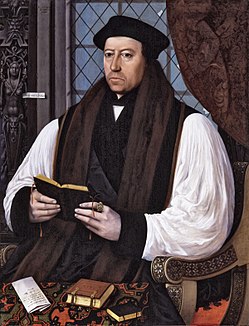Valduvian Reaction
The Valduvian Reaction, alternatively referred to as the Valduvian Correction, Valduvian Reformation, or Valduvian Schism, was a Sotirian religious and political movement in the Platavian Union and parts of the Rudolphine Confederation during the 16th century. Usually characterized as part of the broader Amendist Reaction, the movement saw the spread of Kausian theology throughout modern-day Valduvia and culminated in the ongoing break in communion between the Valduvian Apostolic Church and the Solarian Catholic Church. The movement's description as Amendist is controversial among scholars, and a sizable minority argue that the theological basis for the events in question is more closely related to Episemialist theology than that of other contemporary Amendist movements. For this reason, the Valduvian Reaction is sometimes considered to be a distinct event drawing inspiration from the zeal of Amendist reformers, rather than a constituent movement of the latter.
The Valduvian Reaction began in 1515 when Arvīds Kauss, the Archbishop of Matīspils, delivered his Letter of Grave Concern to Pope Caritas . In his letter, Kauss expressed consternation over the excommunication and killing of leading reformer Johanne Stearn that had occurred several months prior, and outlined several teachings and practices of the Catholic Church that Kauss argued were recent inventions inconsistent with historical Sotirianity. Kauss's points included critiques of papal supremacy, clerical celibacy, the distinction between mortal and venial sins, indulgences, the concept of purgatory, closed communion, Filioque, the relationship and relative authority of scripture and sacred tradition, and Catholicism's claim to be the one true church. Kauss gained a significant following among the Platavian clergy and was openly supported by King Matīss IX, who promoted the spread of Kausian theology in neighboring Burland with the aim of undermining Rudolphine authority in the region. The Solarian Catholic Church ultimately repudiated Kauss's views at the Council of X in 15XX, and Kauss and his followers were excommunicated. The prelates of the Platavian and Burish churches subsequently established the Valduvian Apostolic Church in 15XX, marking the end of the Reaction.
The effects of the Reaction were widespread, with religious, societal, and political ramifications that permanently shaped the course of Valduvian history and that of Euclea as a whole. The movement resulted in Kausianism, specifically in its institutionalized form under the Valduvian Apostolic Church, emerging as the dominant Sotirian tradition in the territories of modern-day Valduvia. Kausian concepts such as scriptura per traditionem and branch theory formed the basis for a new theological paradigm in Eastern Sotirianity, distinct from both Catholicism and most other strains of Amendism. The status of Kausian Sotirians in Burland was a significant cause of the Amendist Wars during the late 16th and early 17th centuries, with the Platavian Union intervening to protect the rights of Amendists in the Rudolphine Confederation. Platavia and the Burish states subsequently formed the Valduvian Confederation, the earliest predecessor of the modern Valduvian state, as a defensive bulwark against future aggression by the Rudolphines. The shared religious identity between Burlanders and ethnic Valduvians would later become central to the emergence of a Valduvian national identity in the late 18th and early 19th centuries.
Nomenclature
Background
The region surrounding the Valduve River had occupied a unique position within Euclean Sotirianity since the Sotirianization of the Valduvian tribes during the 6th and 7th centuries AD. Although formally under the jurisdiction of the Bishop of Solaria and thus ecclesiastically tied to Eastern Sotirianity, Sotirians in the region were heavily influenced by Western theology due to their geographic location at the western frontier of the Solarian Catholic Church. Leaders within the Valduvian churches frequently sided with the western patriarchs in theological disputes, but still submitted to Solaria's ecclesiastical authority. After the Lesser Schism of 1385, divides within the Valduvian churches led to the short-lived Pelšite Revolt, in which the Archiocese of Dzērbene attempted to break communion with Solaria and unite with the Episemialist Church. The revolt was crushed by the Kingdom of Platavia at the behest of the Papacy, ensuring that the Valduvian churches would remain within the Solarian Catholic world. Nevertheless, the Valduvian continued to preach many theological doctrines that set them at odds with Solaria, including the rejection of the Filioque, the distinction between mortal and venial sins, and the Eastern interpretation of purgatory. Many Valduvian churches also continued to practice clerical marriage, making them among the only episcopal sees in communion with Solaria to reject clerical celibacy.
At the beginning of the Amendist Reaction, many Valduvian Sotirians saw their disputes with the Papacy as analogous to those of the Eastern reformers. Unlike in Estmere and the Rudolphine Confederation, the church leadership in the Valduvian states was largely sympathetic to the Amendist calls for reform. However, most disagreed with the Amendists on key theological issues, and the archbishops of four Valduvian archdioceses even published a rebuttal to several claims made by Johanne Stearn in his Humble Petition. These theological differences prevented the Valduvian churches from fully embracing the Reaction, even though a significant number of the clergy openly joined the calls for reform and dialogue espoused by the Amendists.
